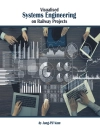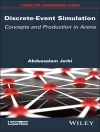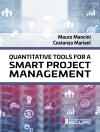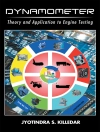This book comprises chapters on key problems in machine learning and signal processing arenas. The contents of the book are a result of a 2014 Workshop on Machine Intelligence and Signal Processing held at the Indraprastha Institute of Information Technology. Traditionally, signal processing and machine learning were considered to be separate areas of research. However in recent times the two communities are getting closer. In a very abstract fashion, signal processing is the study of operator design. The contributions of signal processing had been to device operators for restoration, compression, etc. Applied Mathematicians were more interested in operator analysis. Nowadays signal processing research is gravitating towards operator learning – instead of designing operators based on heuristics (for example wavelets), the trend is to learn these operators (for example dictionary learning). And thus, the gap between signal processing and machine learning is fast converging. The 2014 Workshop on Machine Intelligence and Signal Processing was one of the few unique events that are focused on the convergence of the two fields. The book is comprised of chapters based on the top presentations at the workshop. This book has three chapters on various topics of biometrics – two are on face detection and one on iris recognition; all from top researchers in their field. There are four chapters on different biomedical signal / image processing problems. Two of these are on retinal vesselclassification and extraction; one on biomedical signal acquisition and the fourth one on region detection. There are three chapters on data analysis – a topic gaining immense popularity in industry and academia. One of these shows a novel use of compressed sensing in missing sales data interpolation. Another chapter is on spam detection and the third one is on simple one-shot movie rating prediction. Four other chapters cover various cutting edge miscellaneous topics on character recognition, software effort prediction, speech recognition and non-linear sparse recovery. The contents of this book will prove useful to researchers, professionals and students in the domains of machine learning and signal processing.
Table of Content
Chapter 1. Advancing Cross-spectral Iris Recognition Research using Bi-spectral Imaging.-
Chapter 2. Fast 3D Salient Region Detection in Medical Images using GPUs.-
Chapter 3. Recovering Partially Sampled EEG Signals using Learned Dictionaries.-
Chapter 4. Greedy Algorithms for Non-linear Sparse Recovery.-
Chapter 5. Improving Rating Predictions by Baseline Estimation and Single Pass Low-rank Approximation.-
Chapter 6. Reducing Inter-scanner Variability in Multi-site f MRI Activations using Correction Functions: A Preliminary Study.-
Chapter 7. Genetically Modified Logistic Regression with Radial Basis Function for Robust Software Effort Prediction.-
Chapter 8. Missing Data Interpolation using Compressive Sensing: An Application for Sales Data Gathering.-
Chapter 9. Retinal Vessel Classification based on Maximization of Squared-loss Mutual Information.-
Chapter 10. Retinal Blood Vessel Extraction and Optic Disc Removal using Curvelet Transform and Morphological Operation.-
Chapter 11. Adaptive Skin Color Model to Improve Video Face Detection.-
Chapter 12. Automated Spam Detection in Short Text Messages.-
Chapter 13. Domain Adaptation for Face Detection.-
Chapter 14. Comparative Study of Pre-processing and Classification Methods in Character Recognition of Natural Scene Images.
About the author
Richa Singh received her M.S. and Ph.D. degrees in computer science in 2005 and 2008, respectively from the West Virginia University, Morgantown, USA. She is currently an Associate Professor and recipient of the Kusum and Mohandas Pai Faculty Research Fellowship at the Indraprastha Institute of Information Technology (IIIT) Delhi, India. Her research has been funded by the UIDAI and DEITY, Government of India. She is a recipient of the FAST award by DST, India. Her areas of interest are biometrics, pattern recognition, and machine learning. She has more than 150 publications in refereed journals, book chapters, and conferences. She is an editorial board member of the Journal of Information Fusion and EURASIP Journal on Image and Video Processing. She is the PC Co-Chair of International Conference on Biometrics: Theory, Applications and Systems, 2016. Dr. Singh is a member of the IEEE, Computer Society and the Association for Computing Machinery. She is a recipient of several best paper and best poster awards in international conferences.
Mayank Vatsa received the M.S. and Ph.D. degrees in computer science in 2005 and 2008, respectively from the West Virginia University, Morgantown, USA. He is currently an Associate Professor and AR Krishnaswamy Faculty Research Fellow at the Indraprastha Institute of Information Technology (IIIT) Delhi, India. He has more than 150 publications in refereed journals, book chapters, and conferences. His research has been
funded by the UIDAI and DEITY, Government of India. He is a recipient of the FAST award by DST, India. His areas of interest are biometrics, image processing, computer vision, and information fusion. Dr. Vatsa is a member of the IEEE, Computer Society and the Association for Computing Machinery. He is the recipient of several best paper and best poster awards in international conferences. He is also an associate editor of IEEE Access, area editor of Information Fusion, and IEEE Biometric Compendium, and served as the PC Co-Chair of ICB 2013 and IJCB 2014.
Angshul Majumdar is currently an assistant professor at Indraprastha Institute of Information Technology Delhi. He is working at this institute since October 2012. He did his Master’s and Ph D in electrical engineering from the University of British Columbia in 2009 and 2012 respectively. His Ph D thesis was on accelerating Magnetic Resonance Imaging scans using sparse recovery techniques. His current research interests are in algorithms for sparse signal recovery a.k.a Compressed Sensing and low-rank matrix recovery. He applies these techniques for problems arising in biomedical signal and image acquisition. Angshul has written more than 60 papers in reputed journals on these topics. Currently Angshul is the president of the IEEE Signal Processing Society chapter under the IEEE Delhi section.
Ajay Kumar received the Ph D degree from the University of Hong Kong, Hong Kong in 2001. He was an assistant
professor with the Department of Electrical Engineering, IIT Delhi, Delhi, India from 2005 to 2007. He has been an assistant professor with the Department of Computing, Hong Kong Polytechnic University, Hong Kong, since 2009. His current research interests are on biometrics with an emphasis on hand biometrics, vascular biometrics, iris, and multimodal biometrics. He holds three US patents, and has authored on biometrics and computer vision-based industrial inspection. He is currently an Area Editor for the Journal of Pattern Recognition Journal and serves on the IEEE Biometrics Council as the Vice President (Publications). He was on the Editorial Board of the IEEE Transactions on Information Forensics and Security from 2010 to 2013, and served on the program committees of several international conferences and workshops in the field of his research interest. He was the program chair of the Third International Conference on Ethics and Policy of Biometrics and International Data Sharing in 2010, the program co-chair of the International Joint Conference held in Washington, DC, USA, in 2011, the International Conference on Biometrics held in Madrid, in 2013, CVPR 2013 Biometrics Workshop held in Portland, CVPR 2014 Biometrics Workshop held in Columbus, CVPR 2015 Workshop held in Boston, and has also served as the General Co-Chair of the Second International Joint Conference on Biometrics held in Tampa, in 2014 and First International Conference Identity, Security and Behavior Analysis held in Hong Kong in 2015.












